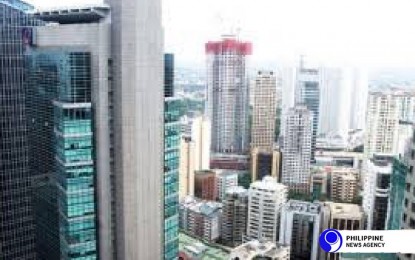
MANILA – An economist forecasts further jump in the local bourse’s main index following S&P Global Ratings’ affirmation of its investment-grade rating of ‘BBB+’, with stable outlook, for the Philippines.
“There could still be some upside in the stock market towards the 6,700/6,750 levels,” BDO chief strategist Jonathan Ravelas told the Philippines News Agency in a Viber message.
He also sees “interest rates to remain stable unless inflation rears its ugly head.”
This, after the debt rater on Thursday affirmed not only the country’s long-term credit rating but also the short-term sovereign credit rating of ‘A-2’ on expectations that the government will be able to contain Covid-19 infections and fiscal performance will improve after the hit from pandemic-related spending.
S&P noted the improvement in domestic output following the -4.2 percent print in the first quarter of the year, better than the -8.3 percent contraction in the last quarter of 2020.
It forecasts a 7.9 percent growth, as measured by gross domestic product (GDP), for the domestic economy this year. This forecast is higher than the government’s 6-7 percent target.
Domestic output is seen to moderate to 7.2 percent in 2022-23 and to 7.1 percent in 2024.
The Philippine Stock Exchange index (PSEi) rose further to 6,665.14 points on Thursday.
The main stocks gauge has been fluctuating, with the recent slide early this week traced to bargain hunting.
Meanwhile, ING Bank Manila senior economist Nicholas Mapa, in a report, noted S&P’s warning for a possible credit downgrade for the Philippines “if growth fell short of expectations while also indicating that upgrades would be forthcoming should growth surprise on the upside, as this would lead to even better fiscal metrics.”
He said the country, to date, has deployed around 4.5 million vaccines and “global growth has accelerated while Bayanihan 3 is being pushed hard in the Lower House.”
He “remain(s) wary however of the fiscal health of the economy, in as much as debt and deficit to GDP ratios will likely worsen in the coming quarters should GDP continue to underperform.”
“Any downside surprise to the 7.9 percent forecast of S&P and the government’s 6-7 percent growth outlook would translate to deeper deficit ratios and worsening debt ratios as GDP fails to hit the mark,” he said.
He added that “a sustained incidence of debt-to-GDP ratio above the 60 percent (already posted in the 1Q) could easily prod a rethink of the current stance while a substantial underperformance in GDP (our own forecast at 4.7 percent) relative to the ambitious growth targets could likewise force the deficit-to-GDP ratio to worsen past the downwardly revised -9.4 percent of the government.”
Earlier, Bangko Sentral ng Pilipinas (BSP) Governor Benjamin Diokno said economic managers are “very careful” about keeping the proportion of government debt to the domestic output below the international threshold of 60 percent.
He said this rose to 54.6 percent in end-2020 but is still better compared to some Asian countries.
“And the analysis is that because of the reforms that we have done our borrowing program is sustainable. So, there should be no fear that the rating agencies will downgrade us. In fact, in the sea of downgrades they have affirmed their ratings on the Philippines’ international credit,” he added. (PNA)
